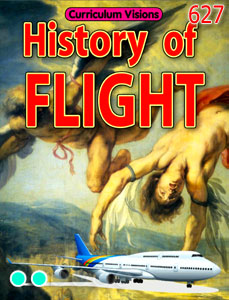Aircraft are the latest in a long line of things that people have made to travel by air.
The earliest flying objects were kites, made thousands of years ago in China. In 200BC a kite was flown over enemy territory to work out the length of tunnel required to get under enemy defences.
Kites were also used for entertainment.
Hot air balloons were developed by the Montgolfier Brothers on 21 November 1783. Then people discovered gases that were lighter than air. Hydrogen gas (which could be extracted from air) was used widely to make balloons from the 1790s onwards. These balloons were attached to the ground with ropes. Under them, people stood in a small basket. They gave the world's first aerial view. They were used in the American Civil War during the 19th century by each side so they could see what the others were doing. They were also used in the First World War to look over the trenches.
The first steerable balloon (known as a dirigible) was flown by Henri Giffard in 1852. It was powered by a steam engine. By the late 19th century powered hydrogen balloons were becoming more common.
In 1872 Paul Haenlein flew the first internal combustion motor powered balloon.
These lighter-than-air aircraft were steered and propelled through the air using rudders and propellers. They stayed in the air by having a large balloon, or "envelope", filled with a gas which is less dense than the surrounding atmosphere. The first lifting gas used was hydrogen. However, hydrogen can easily catch fire, and there were many accidents with such machines, the most famous being the Hindenburg airship disaster of 1937. Modern airships use helium, which will not burn.
All of these airships were popular because it was difficult to get sufficient power from early engines to lift a fixed-wing aircraft off the ground. The first to do so were the Wright Brothers in 1903.
After these early attempts, people throughout the world saw that fixed-wing aircraft were more manoeuvrable and faster. They were used in the First World War, and became a standard way of crossing the Atlantic Ocean by the Second World War.
The development of the jet engine meant that even more passengers or cargo could be carried. Jet engines power all large aircraft today.












